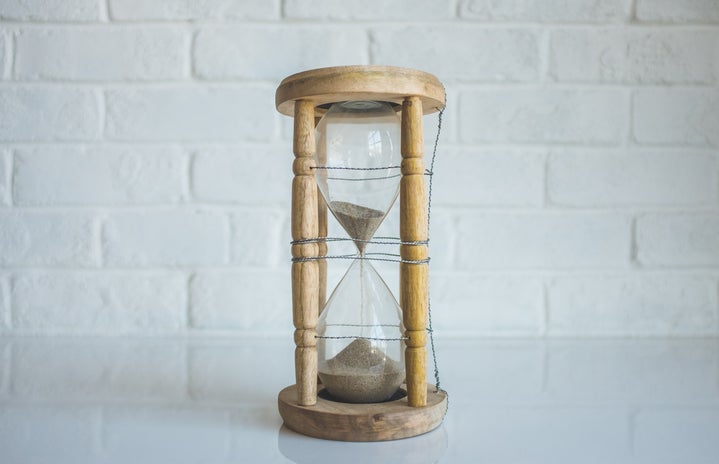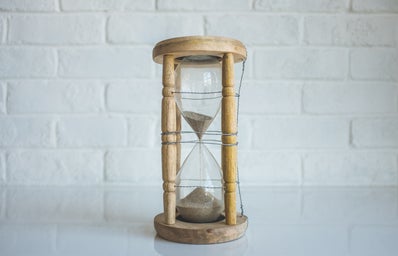Every makeup wearer needs some good tools in his/her kit – some admittedly more essential than others, and some more obvious than others. Here’s my list of useful tools to consider purchasing, if you don’t already own them. Please excuse my inexpertly photographed and extremely dirty tools; they’re pictured for your reference!
1. Foundation Applicator
If you wear foundation or concealer, you need something to apply it with, whether that be a brush, a sponge, or simply your fingers.
My favourite brush for foundation is the Real Techniques expert face brush. It’s a medium-sized, dense brush that’s small enough to get around your eyes and nose, but still large enough to cover your face quite quickly. This brush works well for concealer as well, although I have a much smaller brush with a flat top that I sometimes use if I’m just spot concealing. The Artiste brushes have recently been raved about by gurus online; I don’t have any myself, but they’re another option to look into.
Any old makeup sponge will work if a sponge is your applicator of choice. The most popular one, however, is probably the Beauty Blender. Personally, I really like the Beauty Blender for its size, shape and texture. I have used the Real Techniques sponge, which is considered a dupe for the Beauty Blender, but I find it a bit heavier. Between the Real Techniques sponge and the Beauty Blender, I recommend just going all in and getting the Beauty Blender. I do like the Beauty Blender better than regular makeup sponges; however, if you don’t want to spend that kind of money on a sponge, just stick to packs of disposable ones and the world won’t end.
Some foundations and concealer will apply great with your fingers, but this will not always yield the most flawless application. Consider the options above, and when using a new foundation, it is best to try applying it with different tools to see what works best. Also, when blending concealer under your eyes, they say it’s best to use your ring finger for the softest touch in this sensitive area.
2. Mirror
I really don’t know anyone who can do their own makeup without a mirror. If you can, props to you! But for everyone else, I really recommend having a good sized mirror that doesn’t distort the image. You can get some pretty fancy mirrors with magnifying sides and different types of lighting. You can also get perfectly acceptable mirrors from the dollar store, which is what I use. Either a handheld one or the stand-up type is good, depending on your preference. I personally use the type that has a stand and magnifies on one side. The magnifying side is especially good to use when I’m plucking my eyebrows, or just want a close-up look at my face for whatever reason.
3. Brushes
Other than a foundation brush, as discussed above, there are a few makeup brushes that I consider pretty essential to a kit. A powder brush (and optionally, a velour puff) and blush brush are the basics. A stippling brush is great for products such as cream blush. If you contour, you probably have a brush for that; contouring brushes are often more dense and either flat or angled. A brush for highlighting is useful, such as a domed brush or a fan brush. I don’t bronze much, but I imagine a small powder brush or even your blush or highlighting brush could get the job done. I find that a retractable kabuki brush is nice to have for travelling, as it can substitute for your powder and blush brushes. I can get away with using mine for contouring as well by angling the brush such that I’m only using the edge of it. I’ve even used my kabuki brush for blending in concealer by retracting the brush partly so that it’s more dense and acts less like a powder brush.
A smaller brush for details (e.g. highlighting your brow bone and cupid’s bow, or contouring your nose) is also handy to have. Finally, in terms of eye brushes, I find that for basic looks, a few brushes suffice: a basic shader brush for placing colour on most of your lid, a good fluffy brush for blending, and a flat or angled brush for if you want to line your eyes with either eyeshadow or gel liner. Most of my brushes happen to be from Real Techniques and EcoTools, because they’re affordable and pretty good quality.
4. Eyelash Curler and Comb
If you’re not blessed with naturally curly lashes, a solidly made eyelash curler that fits your eye shape and length will help to open up your eyes and make a world of a difference to your mascara game. This is important especially for someone like me, with Asian (almond shaped, monolid) eyes. I use the Shiseido eyelash curler because its curve is shallower than most, so it fits my eye shape quite well, allowing me to get close to my lash line without feeling like I’m going to clip my eye. For people with deeper-set eyes, the Shu Uemura curler seems to be popular. For something like this, I think an investment into a good quality curler is worth it because it will work better with less effort, and last a very long time.
A lash comb is not strictly necessary, but I find it good to have one around for in case I apply too much mascara or it gets clumpy. A metal lash comb is far superior to a plastic one, in my opinion. It can actually be used to separate and comb through lashes, whereas in my experience plastic combs have simply pushed my eyelashes into my eyelids with no positive effects whatsoever.
5. Precision Q-Tips
I just have to say, precision Q-Tips are so much better than regular Q-Tips. I use them to clean up my eye makeup if I went a little too crazy with my mascara or got it somewhere I didn’t want. I’ve even dipped them in a bit of makeup remover to clean up winged liner. They can do all these jobs without getting nearly as fluffy and annoying as regular Q-Tips. They come in smaller packs (i.e. they’re more expensive), but they’re worth it – realistically, I’ve never finished a box of Q-Tips anyway…
6. Glass Nail File
So this isn’t a makeup tool, but it is a beauty tool that I want to endorse. Glass or crystal nail files pretty much last forever, and have a finer grain than most regular ones. They also often come with plastic cases, which are great for travelling!
Bonus nail-related tool: If I feel like trying to give myself a nice manicure, I keep a small paintbrush on hand! I dip it in pure acetone and use it to clean up around the edges of my nails and to create that perfect round shape next to my cuticle, if it doesn’t work out with just polish.


